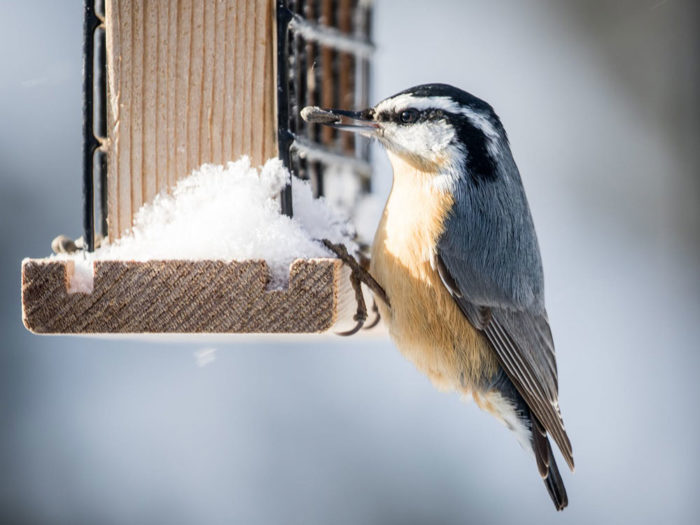
It’s impossible to imagine life without birds. Yet even habitat for black-capped chickadees is rapidly disappearing. According to Doug Tallamy, author of Bringing Nature Home, “Conservation ecologists … believe that one fourth of all bird species will be functionally extinct (that is, so rare that they no longer contribute to the function of ecosystems) within a century.” There are things we gardeners can do—and should do—to help prevent that.

For starters, ditch the chemical pesticides. Birds rely on a high protein insect diet, particularly during nesting season when they and their chicks consume hundreds of caterpillars and other insects daily. Rather than reach for a spray that effectively closes the restaurant, give nature a chance to find the balance between infestation and famine. Birds and other insectivores will come back for seconds.
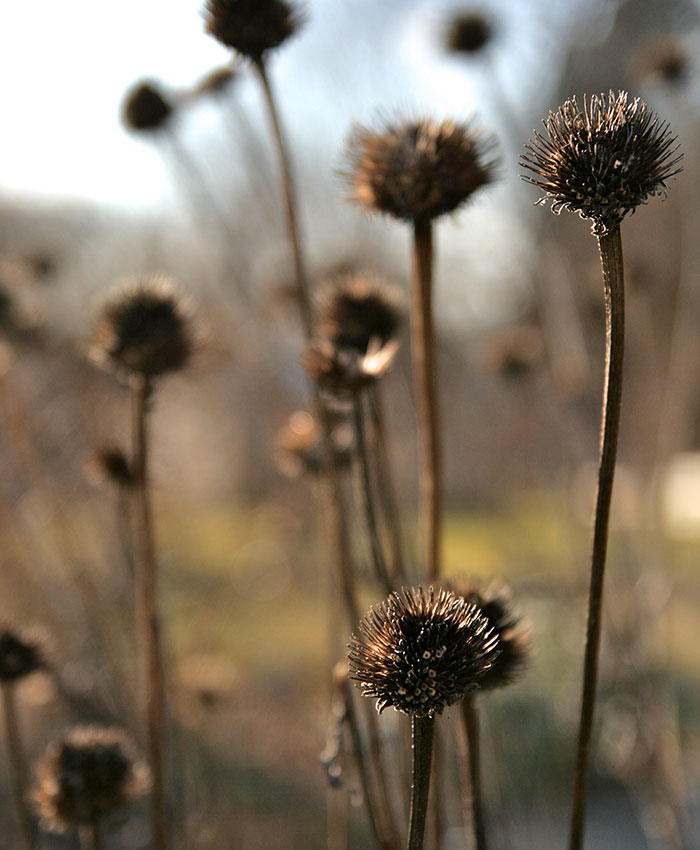
Over winter, when insects are harder to come by, birds forage for seeds and berries, so leave seed heads standing, and include nutritious plants in your garden plan. Regionally native plants are the best choices for a couple of reasons: During the growing season they host insects adapted to pass those—and only those—plants’ nutrition up the food chain. Native plants and birds have a mutually beneficial exchange of calories for seed distribution. The same exchange offered by nonnative plants is an ecological liability when seedlings from introduced species outcompete natives for space and sun. We learned that the hard way with the invasives bittersweet (Celastrus orbiculatus) and burning bush (Euonymus alatus).
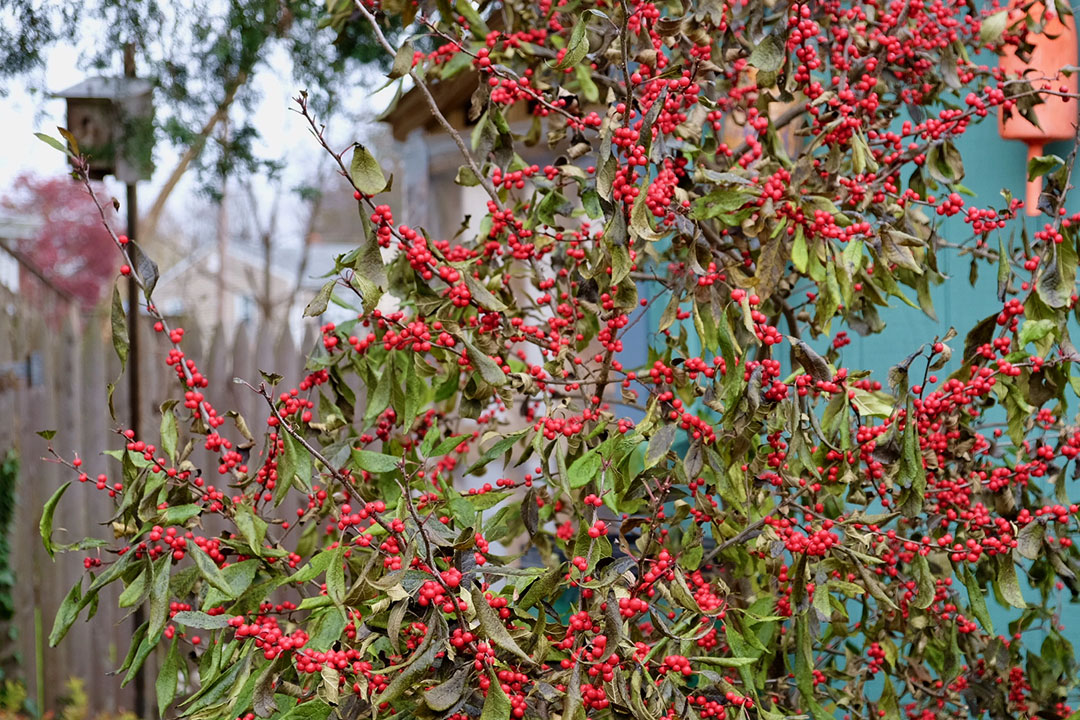
Cedar waxwings and robins will flock to berry-producing trees and shrubs such as Eastern red cedar (Juniperus virginiana, Zones 2–9), bayberry (Myrica pensylvanica, Zones 3–7), and crabapples with bite-sized fruit (half an inch or smaller) like Sargent’s crabapple (Malus sargentii, Zones 4–7) and ‘Prairifire’ (Malus ‘Prairifire’, Zones 4–8). Winterberry (Ilex verticillata, Zones 3–9) will be picked clean after several freeze-and-thaw cycles soften the berries and we’ve had a chance to enjoy their winter interest.
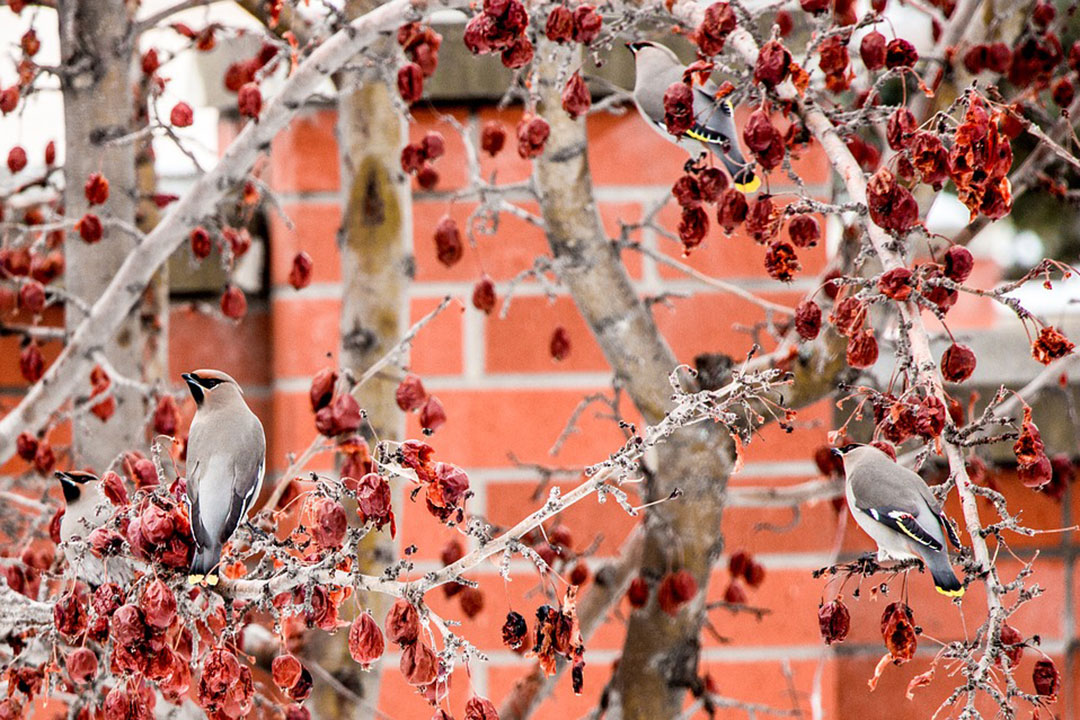
Feeders provide an adequate food source for many other bird species. Choose a high-quality seed mix free of wasteful fillers like red millet and oats, or offer a limited menu of your own. Black oil sunflower seeds attract the widest variety of birds. I have seen finches, nuthatches, cardinals, woodpeckers, tufted titmice, juncos, sparrows, and black-capped chickadees at my feeder. Goldfinches love nyjer (thistle) seed, but squirrels don’t. Squirrels also find safflower seeds unappealing, as do grackles and starlings. Put suet feeders out when the temperature dips near and below freezing to feed woodpeckers, nuthatches, and chickadees. Place your feeders up high and in the open to prevent cats and squirrels from making the leap, but close enough (about 10 feet) to trees and shrubs for birds to retreat for cover.
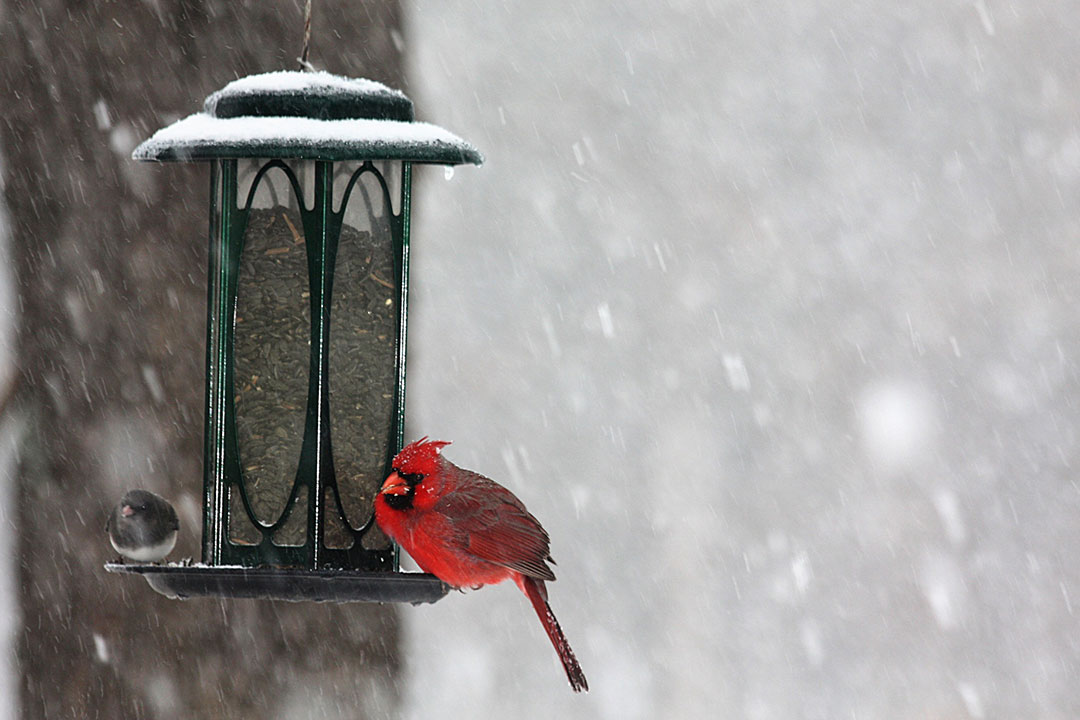
Birds are an integral part of the cycle of a naturally balanced and healthy garden. Welcoming them is as easy as adding more native plants, taking a hands-off and chemical-free approach to insect control, and filling feeders and birdbaths during winter’s worst. This winter, measure your success by participating in the great backyard bird count (birdcount.org) February 14–17, 2020.
—Kristin Green is author of Plantiful: Start Small, Grow Big with 150 Plants That Spread, Self-sow, and Overwinter. She gardens in Bristol, Rhode Island.
Fine Gardening Recommended Products

A.M. Leonard Deluxe Soil Knife & Leather Sheath Combo
Fine Gardening receives a commission for items purchased through links on this site, including Amazon Associates and other affiliate advertising programs.



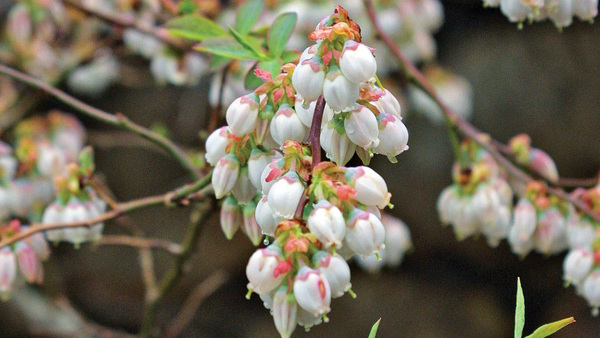















Comments
Log in or create an account to post a comment.
Sign up Log in